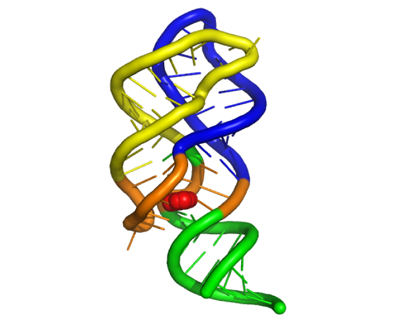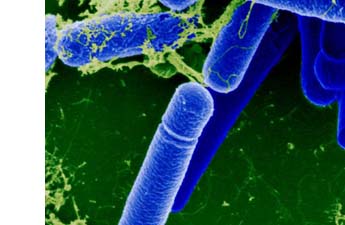Riboswitches: a newly discovered regulation mechanism
Riboswitches are genetic control elements that are located on the 5'-untranslated region of some messenger RNAs. These particular genetic switches exhibit two surprising properties. Firstly, the mRNA harboring the riboswitch is able to form a highly selective binding site for a target metabolite without the aid of proteins. Secondly, metabolite binding promotes an allosteric reorganization of RNA structure that leads to alterations in genetic expression.
Our research focuses on purine riboswitches that are the simplest riboswitches known so far. This group is composed of the adenine and guanine riboswitches that share a very similar tertiary structure. Strikingly, both molecules use a different metabolite (adenine or guanine) to perform two different essential biological functions. We study how these RNA molecules are using their cognate metabolites to achieve their genetic regulation without the help of proteins.


